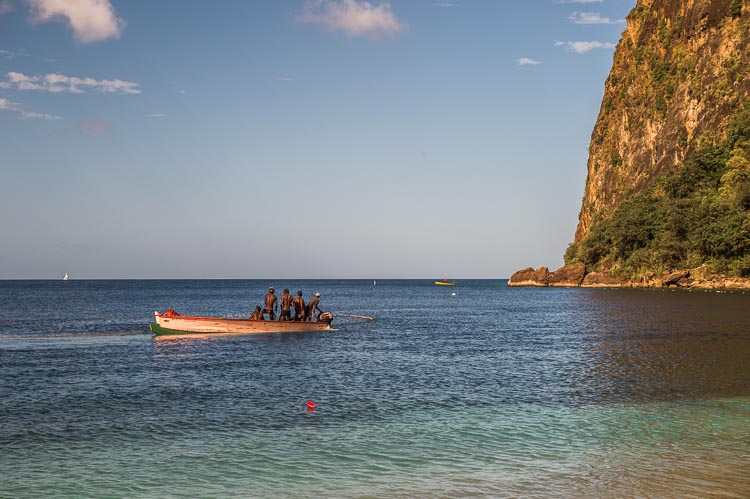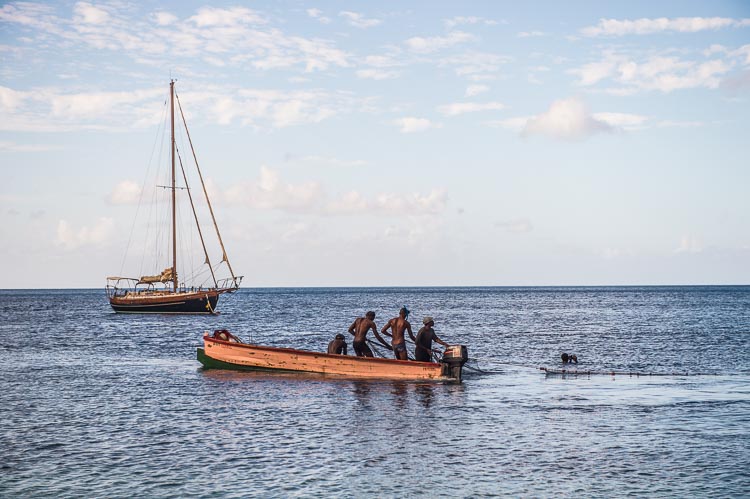
We were shocked to see a boat fishing with gillnets hauling fish from the sea just feet from the Sugar Beach and yards from the Marine Preservation Area signs.
St. Lucia’s south west coast is an area of outstanding beauty and biodiversity. It is protected by the Soufriere Marine Management Area (SMMA) and the Canaries & Anse La Raye Marine Management Area (CAMMA) who charge yachts for mooring in the area and seek funds to support their activities from tourists.
In this region superb scenery, healthy and diverse coral reefs, valuable fish stocks and attractive beaches extend all the way from Marigot Bay to Anse La Ivrogne.
Yachts sailing through the area understand the need for conservation and, as a whole, generally abide by the regulations and pay the fees. Tourists donate funds to support conservation
Not so the local fishermen who see little point in changing the way they have fished the waters for years
The Soufriere Marine Management Association Inc., a self-sustained not-for-profit NGO authorized by the Government of St. Lucia seems powerless to stop them.
It is mandated to conserve the natural marine environment and ensure sustainable use and development of the Areas particularly within the fishing and tourism sectors.

Yet it seems they cannot stop fishermen acting just feet off the beach right in front of the very tourists it is seeking donations from.
Gillnets have been found to be destructive to the coral reef habitat, and were banned in the SMMA in August 1998.
Fish Aggregating Devices (FADs), designed to monitor fish, were installed by the association. Days later the devices were lost and it is suspected that it was the locals who cut the devices free.
There are plans to initiate a progressive shift from near-shore to deep-sea fishing. Arrangements for the provision of easy accessible loans for the Soufriere fishermen for the purchase of appropriate vessels, outboard engines and deep-sea fishing gear have been put in place. But locals it seems, would rather raid a tourist area of fish and careless of the fact that it is those same fish that tourists want to see when they go snorkelling.
